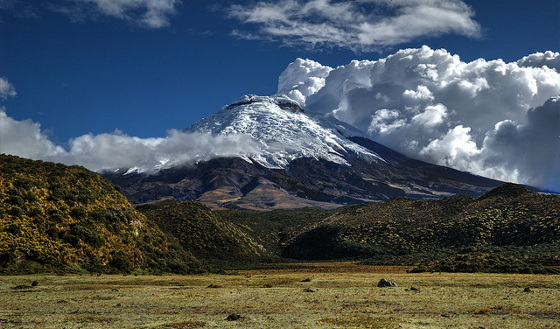The volcano after the eruption turned out to be 'breathing' with a sound not heard by people

By Ωmega *
The latest observation data confirmed that volcanoes that blew lava and plume which melted in muddy along with explosive sounds continued their activities unintentionally after the eruption. According to the observation using a special microphone, Cotopaksi volcano erupted in Ecuador in 2015, "breathing" while outputting super low sound which can not be heard by people's ear of 0.2 Hz even after the activity ceased It has become clear that it was.
This volcano revealed its unique 'voice' after an eruption | Science News
https://www.sciencenews.org/article/cotopaxi-volcano-ecuador-infrasound
This research was led by a research team at Boise State University in Idaho State, USA. Based on observation data from a special microphone that senses nuclear tests banned in the world by sound and vibration, the research team analyzed the activity after volcanic eruption. Two weeks after the eruption of Kotopaksi volcano in August 2015, the research team discovered that the measuring microphone observed very low frequency sound with a unique waveform that is not normally found.

By Ángel M. Felicísimo
Waveforms recorded by multiple microphones were gradually attenuated with slow vibration continuing for about 1 minute as shown in the graph below. From the waveform, it is called "tornillo" meaning "screw" in Spanish.

This tremor is extremely slow, 0.2 Hz, and in other words it will be "a shake that swings once in 5 seconds." The bass that the human ear can hear is said to be 20 Hz as the lower limit, and the sound observed this time is 100 times lower than that, which is not perceivable by human sense. Therefore, the scientific team synthesizes the following sounds so that they can feel the waveform. In this example, the wave cycle is expressed by replacing the top and bottom of the tornillo waveform with the increase or decrease of the volume of the white noise, and the wave increasing / decreasing speed is doubled.
Research has revealed that Cotopaksi volcano repeated this pattern 37 times between September 2015 and April 2016. In addition, it also knows that the waveform pattern of Cotopaxi volcano is very slow compared to other volcanoes. Scientists speculate about the reason, because the air is slowly swaying in the deep cylindrical crater of Cotopaxi volcano.
By further studying the phenomena and features of the waveform, it is thought that it will be useful for forecasting volcanic eruptions in the future. By grasping the waveform pattern unique to the volcano, there is a possibility that when a new pattern occurs, it is possible to detect that some change is occurring in the mountain.
Related Posts:
in Science, Posted by darkhorse_log







